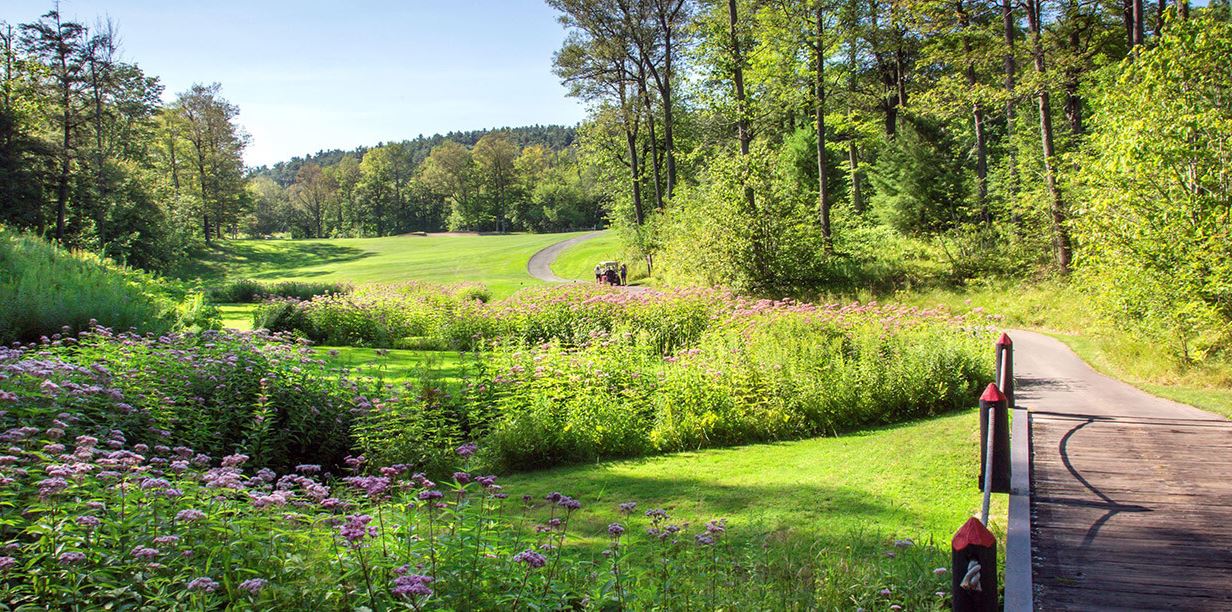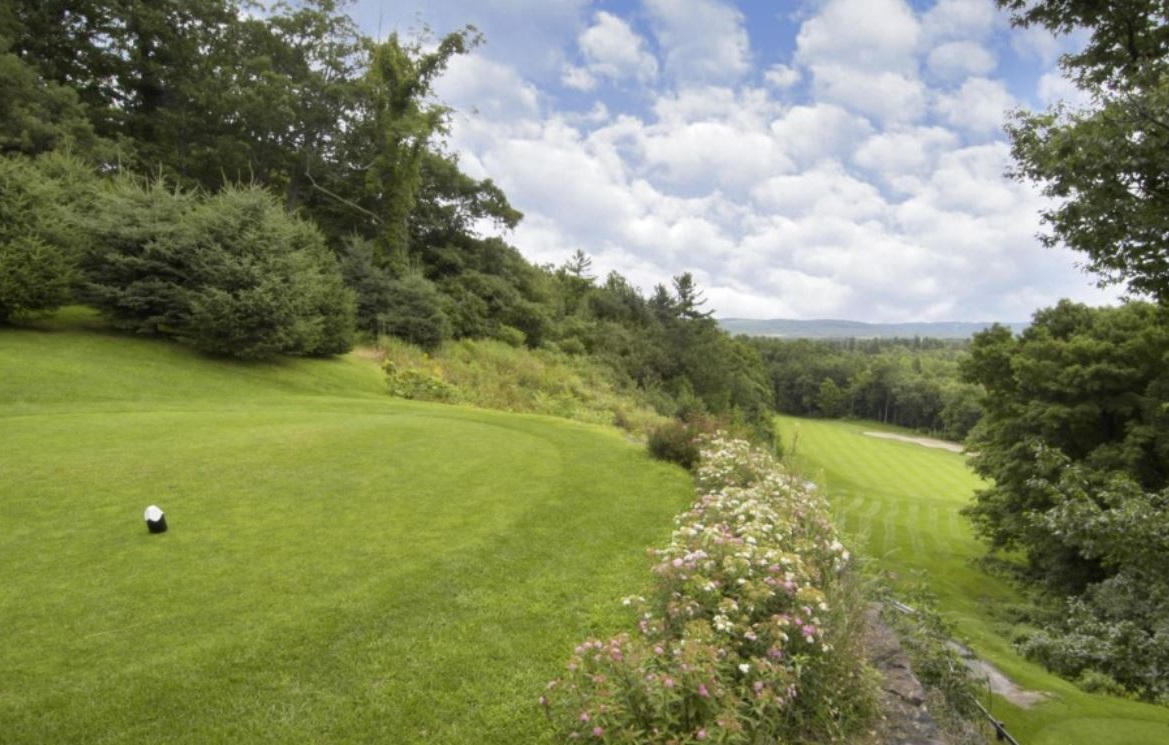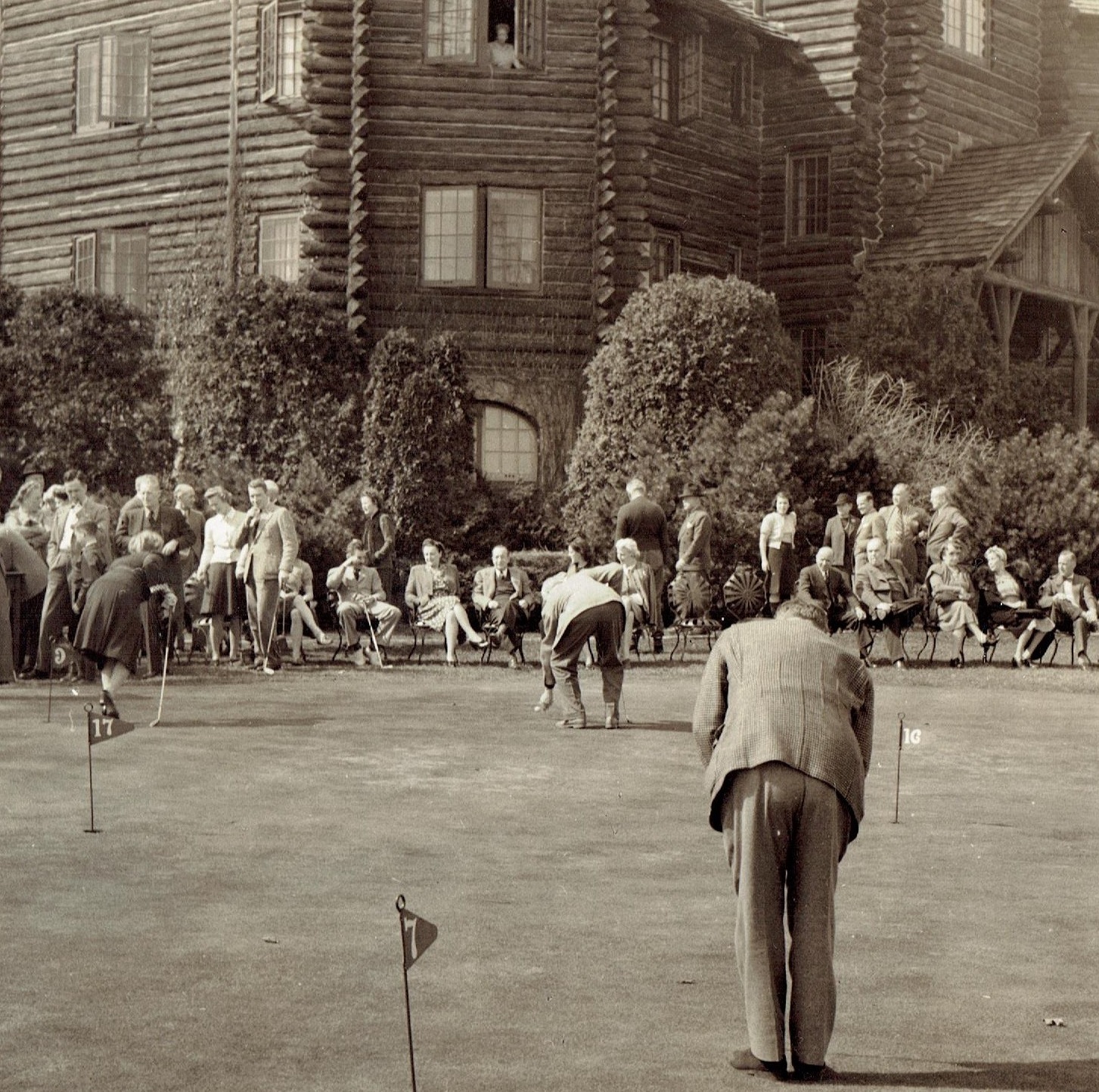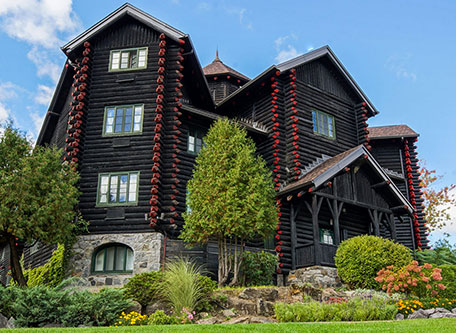Receive for Free - Discover & Explore eNewsletter monthly with advance notice of special offers, packages, and insider savings from 10% - 30% off Best Available Rates at selected hotels.
golf
Discover the Fairmont Le Château Montebello Golf Club, which was originally designed by renowned Canadian architect Stanley Thompson.
Fairmont Le Château Montebello Golf Club
Known for its fascinating past, Fairmont Le Château Montebello Golf Club in the Outaouais region is recognized today for its exciting and challenging course layout!
WATCH NOWAt the height of the Roaring Twenties, Swiss-American entrepreneur Harold M. Saddlemire began developing an exclusive wilderness resort along the banks of the Ottawa River. Originally calling the project “Lucerne-in-Québec,” Saddliemire would ultimately build one of the world’s largest wooden cabins as the center of the retreat. Construction lasted for years and involved an enormous team of 3,500 workers. Many visitors subsequently hailed Saddlemire’s new holiday destination as an engineering masterpiece when it finally debuted as the Seigniory Club in 1930. Despite the onset of the Great Depression, the members-only resort thrived. Indeed, its guestlist included prominent entertainers, businesspeople, and politicians from all over the world. (Even though the club was private, the resort occasionally extended temporary invitations to non-club members of high stature.) To accommodate the rise in its membership, Saddlemire decided to build an accompanying 18-hole golf course to serve the members. He subsequently hired renowned architect Stanley Thompson to spearhead the project, who began constructing the new course mere months after the resort’s grand opening. Thompson proceeded to craft a stunning collection of rolling greens and verdant fairways that masterfully navigated the surrounding countryside. Guests hailed the golf course as one of Thompson’s best as soon as it opened in 1931. It subsequently hosted generations of club members for many years thereafter, until both the resort and the golf course became a public venue known as the “Château Montebello.” Now known as the “Fairmont Le Château Montebello Golf Club,” the golf course has since remained one of Canada’s most luxurious places to play a round of golf. It has also gained a prestigious reputation for its environmentally friendly greenskeeping practices, earning a coveted affiliation within the Audubon Cooperative Program in 2000. Few other places can rival the amazing heritage that the Fairmont Le Château Montebello Golf Club features today.
-
About the Location +
The land upon which the Fairmont Le Château Montebello currently resides was once part of a massive founded by the Papineau family in 1801. The scions of Joseph Papineau, the Papineau family was heavily involved in Canadian politics throughout the 19th century. They specifically championed the preservation of French-Canadian culture and political power at a time when Canada’s national identity was becoming far more anglicized. Louis-Joseph Papineau was the most prominent politician born of the family, having founded the nationalistic Patriote Movement of the early 1800s. The movement eventually spawned a revolt known as the Lower Canada Rebellion, which sought to resist the rise in British colonial power in Québec. Louis-Joseph Papineau was one of the central leaders, alongside such individuals as Jean-Oliver Chénier and Thomas Storrow Brown. Fought in the late 1830s, the rebellion ultimately proved futile. The uprising was quelled in 1838, with many of the ringleaders interred in various prison camps. Papineau himself fled into exile a year later, only returning to Canada in 1845 when he was finally granted amnesty.
Louis-Joseph Papineau soon returned to political life, serving in the Legislative Assembly of the Province of Canada from 1848 to 1852. (The Province of Canada was a union formed between the colonies of Upper and Lower Canada following the failed rebellion of the late 1830s). A committed republican, Papineau remained committed to protecting the rights of French Canadians during his term in office. Around this time, he constructed a magnificent turreted stone manor on the grounds of his family’s estate called “Manior Papineau.” Constructed downstream from Montréal along the banks of the Ottawa River, Papineau lived at the estate with his wife and four children for the remainder of his life. It would continue as the home of the Papineau family for the next seven decades, with his youngest daughter, Azélie, inheriting it sometime after his death in 1871. According to Parks Canada—which became the steward of the site in 1993—the manor’s architecture:
- “Represents a blend of stylistic influences similar in many respects to that which is encountered in contemporaneous neoclassical villas. Its sculpted decor recalls the Greek Revival style. From the river, the house appears as a monumental elevation flanked by two corner towers. The facade and hip slopes of the roof present an overhang of unusual proportions, in a muted reference to the Regency style. The conic roof atop the stair tower built following a fire in 1892 is representative of the Queen Anne Revival. Finally, interior door openings between adjoining rooms were aligned to create particular interior perspectives, in keeping with French architectural tradition. The spiral staircase located in one of the towers also shows the influence of this tradition. The unusual positioning of the main reception rooms to the back of the ground floor, combined with the abundant fenestration on the lower two levels of the east tower, recall that a conservatory was once located here.”
This brilliant destination is now recognized by the Canadian government as a National Historic Site of Canada. Its amazing architectural designs are some of the finest in the region, as are its views overlooking the Ottawa River. But the site is also a widely celebrated landmark in Québec due to its connection to Louis-Joseph Papineau. Even though Papineau’s movement ultimately failed during the late 1830s, it had successfully sparked a proud sense of patriotism among the Québécoise that lasts to this very day. As such, the Manoir Papineau National Historic Site continues to be one of the most important symbols of French-Canadian heritage in Canada today.
-
About the Architect +
Stanley Thompson: The mastermind behind the Fairmont Le Château Montebello Golf Club, Stanley Thompson has been hailed as one of the world’s best golf course architects. Although Thompson himself hailed from Toronto, he was born to Scottish parents in the late 19th century. Golf was big in his family growing up, with all five Thompson brothers working as caddies at the Toronto Golf Club. Stanley Thompson nonetheless decided to pursue an education, earning a degree from the Malvern Collegiate Institute and even enrolling in the prestigious Ontario Agricultural College for two years. Unfortunately, Thompson’s studies were abruptly interrupted when Canada joined the Allied cause during World War I. Enlisting in the Canadian Expeditionary Force, Thompson served with distinction in the 4th Brigade, Canadian Field Artillery throughout much of the conflict. Upon his return from serving overseas, Thompson began working in golf course design alongside his brother, Nicol, for some time, before the two finally formed a partnership with a longtime associate named George Cumming. (The Thompsons knew Cumming as the head professional of the Toronto Golf Club from their time working as caddies.) While the group’s company only constructed a handful of golf courses, the experience was invaluable for Stanley Thompson. The projects allowed him to begin refining his soon-to-be famous practices of using the natural flow of the land to guide his designs.
When their partnership finally dissolved in the early 1920s, Thompson subsequently went on to produce dozens of golf courses across Canada on his own. In just a matter of years, he gradually developed a celebrated reputation for his picturesque, scenic courses. Indeed, some of his best examples were in many of Canada’s national parks—or places that would become national parks—including Banff National Park, Jasper National Park, and the Cape Breton Highlands National Park. Demand for Thompson’s talents had become so great that by the end of the 1920s, he was able to begin hiring additional architects to handle his caseload. In fact, his firm had a hand in starting the careers of many other noteworthy golf course designers, such as Geoffrey Cornish and Robert Trent Jones Sr. In all, Stanley Thompson designed or renovated nearly 180 courses throughout his lifetime, playing an integral role in establishing golf firmly in Canada’s popular culture. He had even crafted several additional courses around the world, too, in places like Brazil, Colombia, and the United States. But perhaps his greatest achievement came later in his life when he helped found the American Society of Golf Course Architects alongside Donald Ross and Robert Trent Jones Sr. in 1948. Inducted posthumously into the Canadian Golf Hall of Fame several decades after his death during the 1950s, Thompson’s legacy has been rivaled by few others ever since.






























